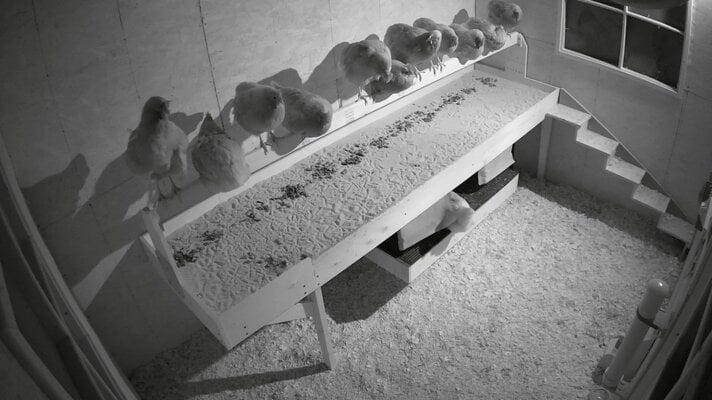Are you sure you need the enclosed coop at all?I'm building a run and a coop again and hoping third time's a charm.
The new covered 12'X22' run will be completely predator proof with hardware cloth and the chickens will have access 24/7 to the run from the coop.
It's pretty mild in the winter here, usually around 40F. The lowest was 10F and it's very rare.
I have 9 hens and might have up to 20 in the future but more likely 15 in winter.
I know you need 4 square feet per bird in a coop but does that rule apply when they can access a secure run all the time? The coop's sides can be covered with clear plastic to block wind.
I think they'll use the coop mainly for sleeping. They will have a free range space outside the run as well.
I was thinking of building a 12'X8' coop, raised 18"off the ground, in the run with a wall splitting the coop in half so they'll be using the half 6'X8' for sleeping and the other half will be used by occasional injured or broody chickens and these guys will have a seperate run space. I'll also raise handful of chicks once a year in there.
When I don't have any of those, this space can be open to the chickens to come in and hang out even though I think they'll usually prefer being outside.
Some people in warm areas make what is basically a covered run, with partial walls to shelter one area for sleeping. The sleeping ares is not fully enclosed, and the chickens cannot be shut inside.
For what you describe, you might want to consider something like that. It might use less materials, and might also feel more spacious to the chickens.
But I'm wondering if it will be okay to build a smaller coop like 12X6, which will make their sleeping space 6x6 but it'll add more space to their run.
Or will it be better making the sleeping area bigger?
What are benefits of building a big space for sleeping?
As regards how small a coop can be if the chickens only use it for sleeping: you need enough length of roosts for all the chickens (usual number: 1 linear foot per chicken), and you need enough space on both sides of the roosts so the chickens do not bump their heads or their butts on a wall, and do not pick on the chickens on the next roost over. You also need enough space for the chickens to safely get up to the roosts and down from them. If the sleeping space ("coop") is open to the run on one side, that can make it easier for the chickens to get up to the roosts and down from them, rather than having a solid wall to hit as they fly.
I suggest you plan out where you are going to put the roosts, and make sure you can fit enough of them, before you make final decisions about what size the coop will be.
Also consider what size materials you will be using to build the coop. The materials may come in specific sizes that make one coop size a better deal than another. For example, if a certain material is 8 feet long, it might cost the same amount of money to build a coop 8 feet or 6 feet, but increasing to 10 feet might cost a lot more because you would need another piece of whatever-it-is.




